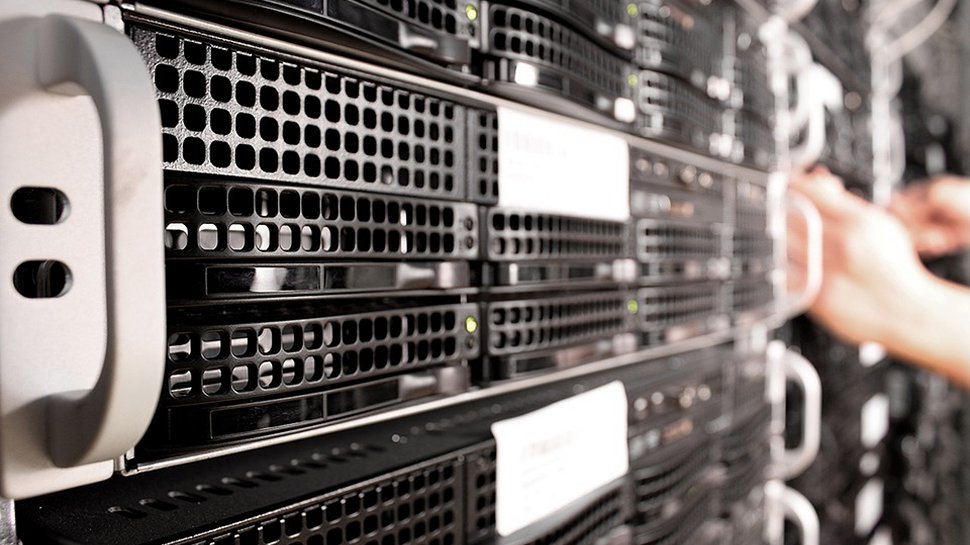Four top web hosting hacks to boost SEO
What to consider when choosing a web host, with SEO in mind

Marc Woodhead is founder and CEO of cutting-edge software development business Holograph, with 25 years’ experience in graphic design, computer system design, human-computer interaction and psychology.
Your choice of web hosting has a major influence on SEO. Speed, or how quickly your website loads is the most important factor. When a user arrives at your website it needs to respond quickly – it feels more natural and it’s what we all expect these days, no one likes waiting for anything anymore!
There are several factors at play here, so let’s look at the key factors that can up your site’s SEO…
- How to choose a web hosting service?
- Take a look at our web-hosting tips eBook
- What are the different types of web hosting?
Bandwidth
The bandwidth available to your website to broadcast and the capacity available to you when viewing - only the former is relevant here as the search engine crawlers generally run from the fastest networks around they still ‘see’ your site very quickly if the sites available bandwidth is good enough. But, if you have built your website with a mass of inappropriately large images and videos this will also slow the site down and impede user (and search crawler) experience, thus impacting negatively on the site.
The sweet spot therefore is a fast host with plenty of bandwidth and a well optimised website in terms of all the content therein.

Uptime
Uptime is the amount of time your website is active for people to view and visit it. Poor uptime creates an adverse experience for your users and thus reduces the ‘value’ of the site in the search algorithms matrix. Furthermore, if your website were down at the time the search engines were crawling your website this can be extremely bad.
So, hosts with poor uptime performance should be avoided at all costs. There are a number of ways you can find out how good your potential host is from online data sources and third-party monitoring.
Cost
It is likely (but not a rule) that the lower the price of the hosting you are using the worse it will be. Why? The lower the cost the less bandwidth you will be allocated, and more likely the lower quality hardware you will be placed on.
Sign up to the TechRadar Pro newsletter to get all the top news, opinion, features and guidance your business needs to succeed!
Hardware with many processor cores, solid state hard drives and 10GB networking will outperform single processor, spinning disk, 1GB network systems by orders of magnitude on a number of different levels.

Network
The network your website is being broadcast from can be a huge factor in either improving all the previous points or even undermining the good ones! If you have a fast server which has great uptime, but the network is in the outer reaches of the Antarctic with very few routes to anywhere else, the impact will again be speed performance.
Finding the best web host
To find the best web host possible for your site you should look for a host with the following combination:
1. A very fast network located on or near major points of presence (in the UK these include London and Manchester), and with the ISP having negotiated priority routing (known as Tier 1 routing).
2. Excellent hardware based on multi-core and even multi-machine hardware with RAID (5,6 or 10) arrays, based on solid state hard drives, and redundancy capability to mitigate hardware failure and downtime. Note: wherever possible make sure you grab a backup of your website and associated data regularly (but do bear in mind the new GDPR rules).
3. CDN (Content Delivery Networks) and distribution of load points for common libraries such as JQuery can also dramatically improve load time performance, reduce bandwidth requirements from your main host and thus improve user experience and load times.
CDNs are a way of co-locating your image and video (generally) content such that it takes the load of your main host. Your website html and operational code remains on your hosting server along with Database (another massive area of consideration – more on this, below), and consequently transactional information. The images and videos are placed on a distributed network of hosting usually designed to deliver more ‘locally’ to the user. So, my website may be hosted in the UK but the images and videos can be loaded more locally for users in Australia and the US for example, as such massively improving latency and the feel of the website for those users.

Databases
A word on databases; Most functional websites use databases, let’s face it, if you just have a static site with minimal to no updates it doesn’t matter how fast your website is it’s unlikely to rank well. So, assuming you have a database, everything we have discussed so far becomes doubled up. The same rules apply – a very fast web host with poor database service will impede the performance of your website.
The size and scale of your database needs to be considered here. Most larger scale sites need separate and dedicated hardware for their databases, keeping the site and database on the same hosting server both increases risk, and in many cases reduces overall performance.
It goes without saying at this point that a well-designed website with a good codebase and well-engineered database architecture are also key factors.
Improving SEO performance
To summarise, fast hosting, well linked by the underlying IPs (Internet Protocol addresses), especially with a number of high performing sites, boost each other’s potential. Whereas bulk, (cheap) relatively slow hosting by an ISP with masses of low-quality sites will potentially adversely affect the SEO performance of your website.
Now we’ve covered web hosting, for some more general tips on boosting SEO, try the following:
- UX is key, is your site giving users a great experience? Are there call to actions? Is it easy to navigate? Users want to get their information and answers quickly and easily, so if your site is hard to use, they will go elsewhere.
- Post regular, engaging content that relates to you and your business. Update your content regularly, don’t expect users to come to you if your content isn’t fresh and is more than six months old.
- Use social media platforms to post links back to your site.
- Use H tags for headings, generally use HTML5 well.
- Optimise your alt tags on images. They must be relevant. Don’t have “getty10485795.png” for example – it means nothing to anyone.
- Optimise your on page meta Add OG images making your pages sharable with supporting images.
- While keywords are a bit out-dated now, it doesn’t hurt to add them and be sure to enrich your copy with them. However, the key words and phrases in your articles should match the page title and images as well as possible.
- Use SEO tools to monitor and gain an understanding of how your site’s SEO is performing, then adapt where there is room for improvement.
- Optimise image size. The bigger the image, the longer the load time. They need to be good quality but not too large, in terms of file size.
Marc Woodhead, Founder and CEO of Holograph
- We've also highlighted the best web hosting services
Marc Woodhead is founder and CEO of cutting-edge software development business Holograph, with 25 years’ experience in graphic design, computer system design, human-computer interaction and psychology.
He has a desire to understand systems (from biological to theorectical computing) to the deepest level.
He is a lifetime of passion for technical systems and all art. He is also an extensive commercial software architecture & development experience. He designs and develops application of hardware systems and technology
